 
|
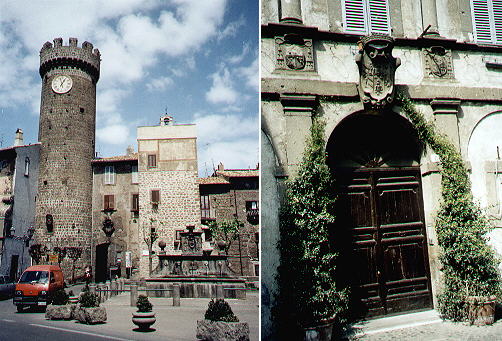 | ||
The casino was redesigned in 1578 by Cardinal de' Gambara, who had in mind the
Orti Farnesiani sul Palatino. A section of the wood of the old villa was turned into an Italian garden,
which was divided by a series of fountains originating from a
single source. The design by il Vignola provided for two exactly identical casinos facing each other and adding to the symmetry of
the gardens and of the fountains.
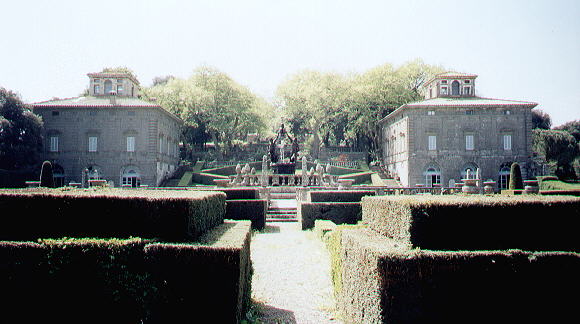 | ||
In 1580 when only one of the casinos was completed Cardinal de' Gambara, maybe advised by Cardinal Borromeo, thought that the new villa could lead to criticism of his lifestyle and he stopped its completion. Gambero in Italian means shrimp and the coat of arms of Cardinal de' Gambara was a shrimp. The buildings and the fountains erected by him are all marked by shrimps (see in the image here below the shrimps on the little loggia at the top of the garden).
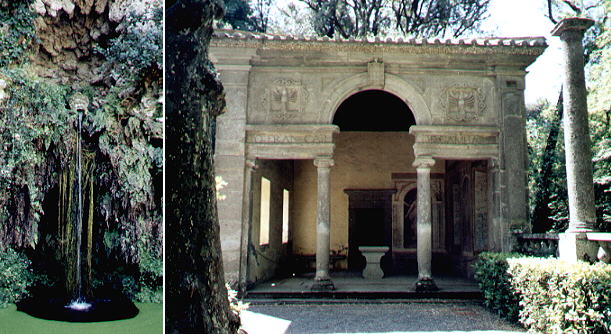 | ||
The fountains have an extremely high number of small waterfalls, resulting in a very pleasant sound, a sort of background music for the various pastimes of the host and his guests.
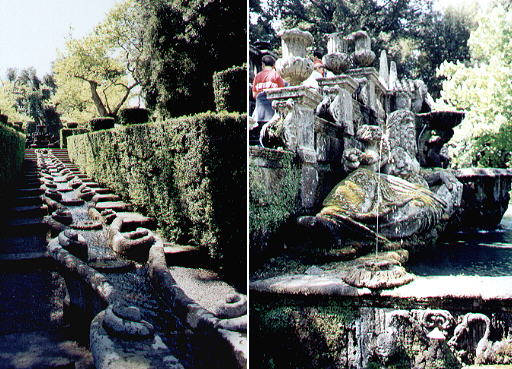 | ||
In the 1620's Cardinal Montalto, a relative of Sixtus V (1585-90) completed the villa by adding the second casino, which shows his heraldic symbols (a lion holding some pears and three mountains topped by a star). He also modified the sculpture at the center of the main fountain, by adding to the already existing four moors his heraldic symbol. The villa is now known as Villa Lante as it was acquired at a later stage by the Lante della Rovere family.
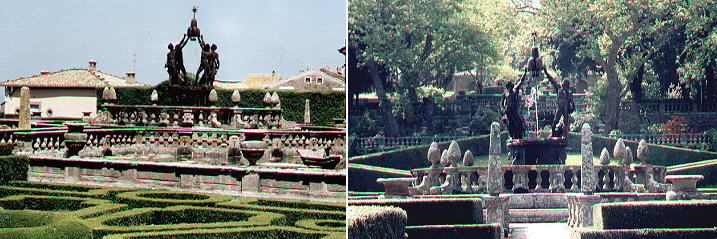 | ||
The large park behind the villa is now a public garden: it has has some interesting fountains, although they are not part of an overall design.
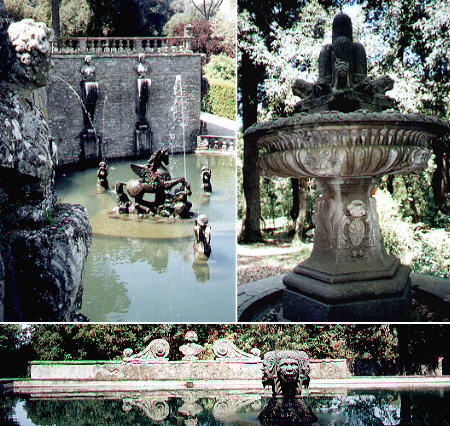 | ||
In and about Viterbo - other pages:
Viterbo
Bagnoregio
Bomarzo
Orte and Vasanello
S. Maria della Querce
S. Martino al Cimino
Tuscania
Vitorchiano
Walks with Ferdinand Gregorovius in the Roman countryside
some other walks:
A walk to Porta Furba
Via Appia Antica from Cecilia Metella to Torre in Selci
Via Appia Antica from Torre in Selci to Frattocchie
See my Home Page on Baroque Rome or my Home Page on Rome in the footsteps of an XVIIIth century traveller
All images © 1999 - 2003 by Roberto Piperno. Write to romapip@quipo.it
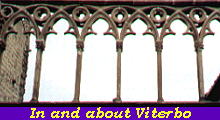 Bagnaia
Bagnaia